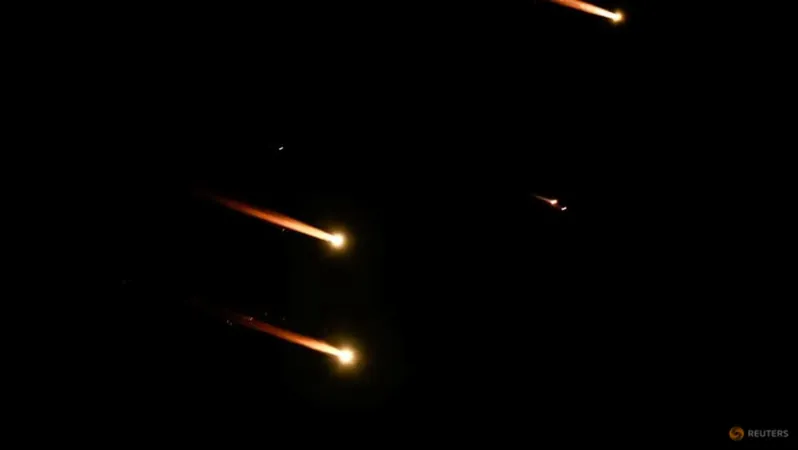
Fifty Years of Israeli Military Interventions in Lebanon: A Tense Legacy and Ongoing Conflict
2024-10-01
Introduction
Israel's recent ground offensive in Lebanon marks yet another chapter in a decades-long saga of military interventions that have shaped the geopolitical landscape of the region. This unfolding situation has deep historical roots, with numerous incursions dating back to 1978.
1978: Operation Litani
Israel initiated its first significant military intervention in Lebanon from March 14 to 21, 1978, through what was called Operation Litani. Aimed primarily at pushing the Palestine Liberation Organization (PLO) forces away from the border, Israeli troops penetrated up to 40 kilometers (25 miles) into Lebanese territory. This operation was met with widespread condemnation from the United Nations, resulting in Resolution 425, which led to the establishment of the United Nations Interim Force in Lebanon (UNIFIL), still operational today.
Despite Israel’s eventual withdrawal in 2000, it effectively maintained control over 700 square kilometers of Lebanese territory by establishing proxy militias, leading to a substantial refugee crisis as tens of thousands fled to Beirut’s southern suburbs, paving the way for Hezbollah's emergence.
1982: The 18-Year Invasion
The second major intervention, dubbed "Peace for Galilee," began on June 6, 1982. This operation escalated conflicts with the PLO, culminating in a brutal siege of Beirut that led to the deaths of around 20,000 people, many civilians, and injuries to 30,000 more. The infamous Sabra and Shatila massacre, where Christian militias allied with Israel killed hundreds, further darkened the legacy of this invasion.
By late 1982, PLO leader Yasser Arafat and thousands of fighters were evacuated under international supervision, but the seeds for further conflict were sown. This period also marked the rise of Hezbollah, a Shiite militant organization born out of the chaos, which began receiving support from Iran, significantly affecting the balance of power in the region.
2006: The 33-Day War
Following Israel's withdrawal, tensions with Hezbollah escalated, leading to the devastating 2006 war sparked by the kidnapping of two Israeli soldiers on the border. The conflict resulted in heavy casualties—approximately 1,200 Lebanese, primarily civilians, and 160 Israelis, mostly soldiers. The United Nations intervened again, with Resolution 1701 calling for a cessation of hostilities and insisting on the deployment of only Lebanese armed forces and UN peacekeepers in southern Lebanon. However, accusations and hostilities continued, reflecting the fragile peace that has persisted since then.
2023-2024: A New Showdown
The latest outbreak of violence began shortly after Hamas launched a surprise attack on Israel on October 7, 2023. Following this, Hezbollah engaged in low-level artillery exchanges with Israeli forces along the border, allegedly in response to the situation in Gaza. Reports indicate that around 60,000 Israelis were forced to flee northern regions due to escalating hostilities, including increased Israeli airstrikes targeting Hezbollah operatives in Lebanon.
In late November 2023, an Israeli operation attributed to efforts against Hezbollah resulted in the deaths of high-ranking leaders, including the reported strike that killed Hassan Nasrallah, a major figure within the organization. The Israeli military argued that their actions aimed at preventing further attacks from Hezbollah and asserted that their ground operations were targeted endeavors rather than a full-scale invasion.
As the conflict escalates, the health ministry in Lebanon has reported significant casualties, with over 1,000 deaths since mid-September and hundreds of thousands displaced, raising urgent calls for international mediation and de-escalation in what has become an increasingly complex and perilous situation in the region.
Conclusion
The question now looms: What will the next phase look like in this ongoing conflict that has spanned over half a century, and how will it reshape the future of Lebanon and its relations with Israel? Stay tuned for updates as this story continues to unfold.




 Brasil (PT)
Brasil (PT)
 Canada (EN)
Canada (EN)
 Chile (ES)
Chile (ES)
 España (ES)
España (ES)
 France (FR)
France (FR)
 Hong Kong (EN)
Hong Kong (EN)
 Italia (IT)
Italia (IT)
 日本 (JA)
日本 (JA)
 Magyarország (HU)
Magyarország (HU)
 Norge (NO)
Norge (NO)
 Polska (PL)
Polska (PL)
 Schweiz (DE)
Schweiz (DE)
 Singapore (EN)
Singapore (EN)
 Sverige (SV)
Sverige (SV)
 Suomi (FI)
Suomi (FI)
 Türkiye (TR)
Türkiye (TR)